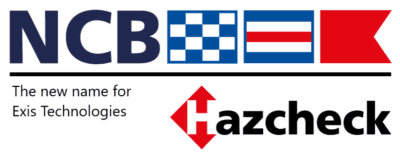CINSnet database developed by Exis Technologies helps industry to identify unsafe practices
An article in Lloyds Loading List on 18 December 2012 has highlighted the success of the CINSnet system developed by Exis Technologies 18 months ago.
Container lines are stepping up efforts to stamp out cargo-related accidents with a detailed account of the sort of unsafe practices by some of their customers that risk both lives and ship damage or loss.
Poor or incorrect packing accounts for half of all accidents involving containerised cargo, much of it likely to have been loaded in a European port.
Analysis by a group of leading container lines that formed the Cargo Incident Notification System 18 months ago shows that leakage is one of the biggest problems faced by the container shipping industry and that overweight containers are not directly responsible for many accidents.
Corrosive cargoes are involved in more than a third of all reported incidents.
This is the first time the industry has had such detailed data covering cargo-related accidents that may have caused injuries or fatalities, loss of or damage to assets or environmental harm. Information showing where the cargo was loaded or discharged has also been compiled.
The facts and figures gathered by the industry should help lines to adjust their safety procedures and provide hard evidence in support of regulatory changes.
The survey covered almost 500 incidents recorded over a period of just over a year. The CINS group will continue to capture information on a systematic basis in future to compile a comprehensive database.
“As the data builds up, lines will be able to have greater impact on the International Maritime Organization, International Labour Organisation and the UN Economic Commission for Europe packing guidelines,” said TT Club risk management director Peregrine Storrs-Fox.
Ocean carriers will no longer have to rely on anecdotal evidence when arguing for tougher rules, but will have clear proof to present to regulators.
The high number of leakage-related incidents reported by the 11 members of the CINS organisation is seen as particularly significant, as this could lead to changes in the way certain cargoes are packaged rather than just packed, perhaps by adjusting the size or type of drums, for example.
That would be the type of practical proposal container lines could present to the experts drafting improvements to the International Maritime Dangerous Goods Code, according to Mr Storrs-Fox, who presented the CINS group’s first findings to a meeting of the Container Owners’ Association in Amsterdam late last month.
The organisation was set up in mid-2011 by Mediterranean Shipping Co, Maersk Line, CMA CGM, Hapag-Lloyd and Evergreen, along with the TT Club and International Group of P&I Clubs.
Founder lines have now been joined by seven more, including CSAV, Zim and Hamburg Süd. Together, CINS members account for just over half the world’s containership fleet. Hapag-Lloyd’s Reinhard Schwede has just taken over from MSC’s Dirk Vande Velde as chairman.
Information on freight-related accidents is compiled and aggregated on a confidential basis, and the group now plans to update and release data to all interested parties on a six-monthly basis.
Container lines and their liability insurers have not shared their experiences like this before, but in future will be able to work together improve industry safety and establish best-practice procedures. Rapid alerts can be sent out in the case of a particularly worrying incident.
The initial set of data published by CINS was released a few weeks after the MSC Flaminia blaze and blast that cost three seafarers their lives.
A container in one of the holds appears to have caught fire, then exploded, prompting suspicions of misdeclared cargo, although accident investigators have not yet completed their findings.
Containers on that ship were loaded in the US and the CINS statistics disprove any assumption that wrongly loaded or identified cargo is more likely to have originated in a developing country.
More than a quarter of the cargoes involved in an incident were loaded in Europe, compared with 11% in Africa. China accounted for 16% of the load ports and the US represented 5%. Europe accounted for 18% of the discharge ports, followed by the Asia-Pacific region with 18%.
Leaks topped the type of incident reported by carriers, followed by misdeclarations. A quarter of all cargoes that subsequently leaked were loaded in Europe, followed by 23% in the Asia-Pacific region and 9% in Africa. Most of the cargo that leaked was being carried in 20 ft dry van containers Poor packing was cited as the potential cause in 40% of incidents, with incorrect packing accounting for a further 10%,
Misdeclarations were reported in 21% of incidents. In terms of substance, corrosive materials accounted for 28% of incidents, followed by inert or solid materials, which were involved in 17%, and flammable liquids with 14%.







